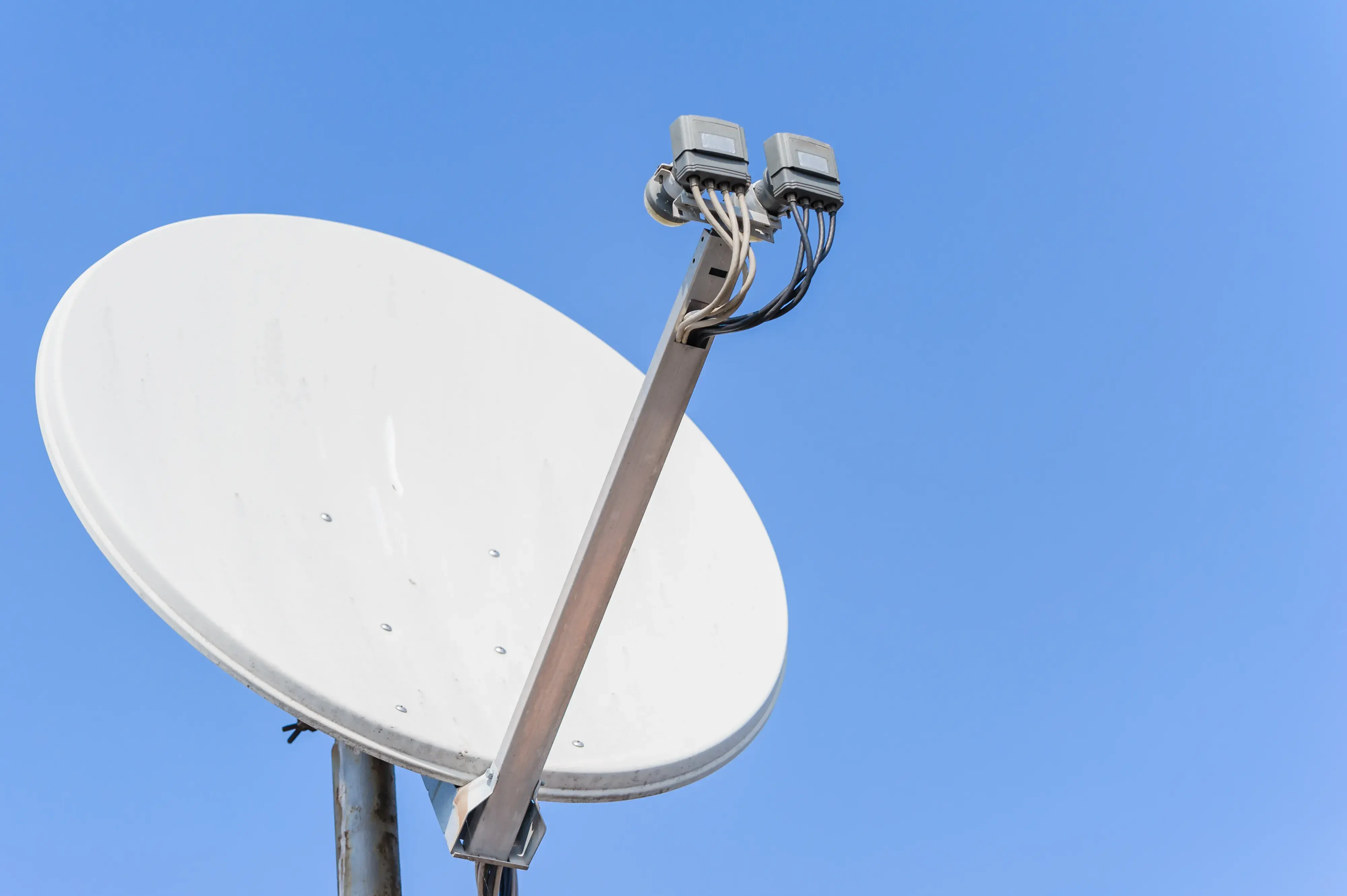-
Posted on: 15 Jul 2024

-
Large, often heavy satellite dishes that must be erected on roofs or in backyards have long been linked with satellite TV. Capturing the satellite signals and delivering television programs depends on these dishes. But given technological progress and the always-changing media environment, one wonders if satellite TV might function without a dish. Examining technical breakthroughs, present alternatives, and future possibilities, this paper investigates the possibility of satellite TV outside of the conventional dish.
Understanding Traditional Satellite TV
Understanding how conventional satellite TV works can help one to appreciate the idea of satellite TV without a dish. Transmission of TV broadcasts depends on communication satellites circling the Earth. From a ground station, these signals are sent to a satellite that beams them back down to a satellite dish placed at the subscriber's address. The dish decodes these signals into television content by capturing them and forwarding them to a receiver linked to the TV.
The satellite dish's importance stems from its design to pick up weak signals from satellites hundreds of miles apart. Without this dish, poor or no reception would follow from too faint signals for the receiver to adequately analyze.
Technological Innovations
New technological developments challenge the conventional satellite TV paradigm. Alternative approaches to distributing television material that might perhaps replace the requirement for a conventional satellite dish have been made possible by innovations in internet streaming, component shrinkability, and signal processing.
Internet-Based Streaming
Among the most notable developments is internet-based streaming. Netflix, Hulu, Amazon Prime Video, and Disney+ among others have transformed television content consumption. These services distribute material over the Internet hence they do not call for a satellite dish. This change has resulted in "cord-cutting," when people choose streaming services over their regular cable or satellite TV subscription.
Though they provide a substitute for conventional satellite TV, internet streaming services are not a direct replacement. Usually, rather than live TV, streaming services provide on-demand programming. Some providers, such as Sling TV, YouTube TV, and Hulu + Live TV, however, deliver live television programs over the internet, therefore providing a closer substitute for conventional satellite TV without requiring a dish.
Micro-satellites and Ground-Based Receivers
Micro-satellites and sophisticated ground-based receivers are other technical advancements that could replace conventional satellite dishes. Launching constellations of tiny, low-Earth orbit (LEO) satellites meant to give worldwide internet connectivity are companies like SpaceX and One Web. These LEO satellites run much closer to Earth than conventional geostationary satellites, which would enable smaller, more compact receivers devoid of big satellite dishes.
Furthermore important might be ground-based receivers fitted with sophisticated signal processing capability. These receivers might be included in set-top boxes or current home internet routers, therefore enabling flawless satellite signal reception without a conventional dish. Though it is a reasonable future path, this method would need major developments in signal processing and receiver sensitivity.
Current Alternatives to Traditional Satellite TV
There are currently many substitutes for conventional satellite TV that provide customers with choices free from the need for a satellite dish.
Streaming Services
As was already noted, one common substitute for regular satellite TV is streaming services. Consumers with a strong internet connection may access live TV channels and a large body of on-demand material. Since streaming services just call for a streaming device or smart TV, their flexibility and simplicity are their key benefits over any specialist equipment.
IPTV
Another substitute for delivering television programs via the Internet is IPTV, Internet Protocol Television. IPTV delivers TV programs over the internet, unlike conventional satellite TV, thereby enabling a more interactive and customized watching experience. Features include video on demand, catch-up TV, and interactive TV apps abound in IPTV systems. These services need appropriate gear and a consistent internet connection rather than a satellite dish.
Cable TV
For many users, cable TV still offers a good substitute. It depends on a physical connection to the cable network, not on a satellite dish even though. Providers of cable TV provide a large spectrum of channels and bundles including live TV, on-demand entertainment, and premium channels. The main restriction of cable TV is its availability as it is usually limited to places with current cable infrastructure.
Future Possibilities
The future of satellite TV without a dish rests on the ongoing technological development and the convergence of many media distribution techniques. Dependency on conventional satellite dishes might lessen as internet connection advances and spreads across more areas.
Hybrid Systems
The creation of hybrid systems combining satellite and internet technology is one future avenue. These systems may employ satellites to transfer materials to a central location, from where they would subsequently be distributed to users via the Internet. While removing the requirement for individual satellite dishes, this method would preserve the advantages of satellite coverage, especially in distant regions.
Direct-to-Device Satellite TV
Direct-to-device satellite TV is yet another fascinating prospect. This idea entails putting satellite receivers right into consumer products such as tablets, smart TVs, and smartphones. These gadgets could pick satellite signals without a conventional dish by use of clever signal processing and tiny components. Although this technology is still in its early years, it has great potential possibilities.
Conclusion
Although conventional satellite TV now depends on a dish to get signals, technological developments are opening doors for substitutes free from this infrastructure. Consumers wishing to get away from conventional satellite dishes already have good choices from Internet-based streaming, IPTV, and cable TV. Future advancements in hybrid systems, ground-based receivers, and micro-satellites might help to further lower the need for satellite dishes, thereby increasing the availability and convenience of satellite TV.
The possibility of satellite TV without a dish becomes ever more realistic as technology develops. Whether using completely new distribution techniques, creative receiver designs, or advances in internet streaming, the future of television content transmission seems to be more adaptable and user-friendly than ever before. For customers, this means more options and more convenience, therefore ushering in an interesting new phase in the history of television entertainment.
Ready to upgrade your TV experience? Call us now at (877) 471-4808 to find the perfect Dish Network plan for you! Don’t miss out on great entertainment—our team is here to help you choose the best package and get you started today.





